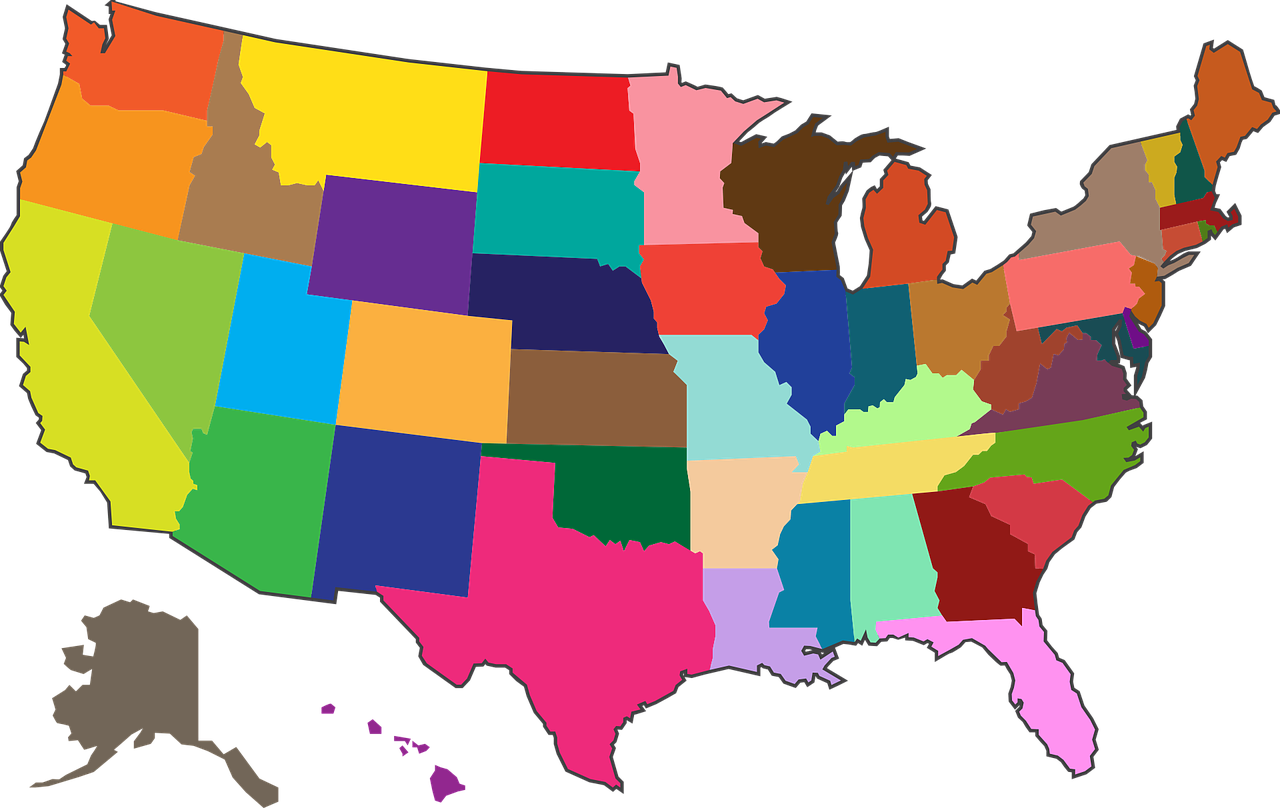More states than ever are requiring that employers offer paid family and medical leave (PFML) insurance to their employees. And now, as employers are increasingly hiring remote employees in various states, it's more critical than ever for them to understand the state-by-state PFML requirements and payroll implications for their business. Wondering if and how you’re impacted? Here’s a high-level overview of PFML and the state-level requirements and payroll considerations to keep in mind.
What is Paid Family and Medical Leave?
Paid family and medical leave (PFML) is a state-mandated and -defined program. States with paid family and medical leave mandates require employees and/or employers to contribute to a paid leave fund, which is allocated to employees who qualify for paid time off work for family or medical reasons. Paid family and medical leave usually includes two main components:
- Paid family leave which provides employees with paid time off for qualifying events, such as caring for a new child or sick family member.
- Paid medical leave which provides employees with paid time off for their own serious illness, injury or other qualifying event.
Paid family and medical leave is different from paid sick leave, which is 100% employer funded, usually earned/accrued and considered shorter term (for example, when you’re out with a cold). Paid family and medical leave is also different from Family and Medical Leave (FML), which requires businesses with at least 50 employees to provide unpaid leave for family and medical leave reasons that are similar to paid family medical leave.
Which states require paid family and medical leave?
Fifteen states, plus Washington, D.C., currently offer or will offer paid family and medical leave. Included in this list are California, Colorado, Connecticut, Delaware, Hawaii, Maine, Maryland, Massachusetts, Minnesota, New Jersey, New York, Oregon, Rhode Island, Vermont, Washington and Washington, D.C.,
Below is an overview of how each of these locations fund their paid family and medical leave programs, as well as information on program status, name, limits and where to go for additional resources. Please note, the information below is accurate based on the publish date of this blog, but it’s always a good idea to double check any information like this that impacts compliance.
Also, just as paid family and medical leave requirements, qualifications and benefits vary from state to state, each state also brands their program and its components by different names. For example, “family caregiver leave,” “family leave insurance,” “temporary disability insurance” and “short-term disability” are common terms that are synonymous with paid family and medical leave.
California
- Program name: California State Disability Insurance (SDI)
- Status: active
- Employer contribution: none (100% employee funded)
- Employee contribution: 1.20% of wages (no max)
- Wage base limit: none
- Where to get more information: California’s Employment Development Department (EDD)
Colorado
- Program name: Family and Medical Leave Insurance Program (FAMLI)
- Status: active
- Employer contribution: 0.88% of wages ($1,549.68 max)
- Employee contribution: 0.44% of wages ($774.84 max)
- Wage base limit: $176,100
- Where to get more information: Colorado Department of Labor and Employment and the FAMLI newsletter
Connecticut
- Program name: Connecticut Paid Leave (CTPL)
- Status: active
- Employer contribution: none (100% employee funded)
- Employee contribution: 0.50% of wages ($880.50 max)
- Wage base limit: $176,100
- Where to get more information: Connecticut’s Paid Leave website
Delaware
- Program name: Paid Family and Medical Leave Insurance Program
- Status: active
- Employer contribution: up to 0.80% of wages ($1,408.80 max, option to withhold half from employee)
- Employee contribution: up to half (0.40%) of employer contribution, if determined by employer
- Wage base limit: $176,100
- Where to get more information: State of Delaware
- Program name: Temporary Disability Insurance (TDI)
- Status: active
- Employer contribution: any insurance premium costs not covered by the employee’s contribution
- Employee contribution: 0.50% of wages ($374.85 max)
- Wage base limit: $1,441.72 weekly
- Where to get more information: State of Hawaii Disability Compensation Division
Maine
- Program name: Maine Paid Family and Medical Leave
- Status: May. 1, 2026 (employee benefits); contributions are currently active
- Employer contribution: 1% of wages for 15 or more employees (option to withhold up to half from employee) or 0.50% of wages (option to withhold up to 100% from employee)
- Employee contribution: up to 50% or 100% of employer contribution (depending on employee count and employer determination)
- Wage base limit: $176,100
- Where to get more information: Maine Department of Labor
Maryland
- Program name: Paid Family Leave
- Status: Jan. 2027 or later
- Employer contribution: 0.45% of wages ($792.45 max)
- Employee contribution: 0.45% of wages ($792.45 max)
- Wage base limit: $176,100
- Where to get more information: Maryland Department of Labor
Massachusetts
- Program name: Paid Family Medical Leave (PFML)
- Status: active
- Employer contribution: none for under 25 employees; 0.42% of wages ($739.62 max) for 25+ employees
- Employee contribution: 0.46% of wages ($810.06 max)
- Wage base limit: $176,100
- Where to get more information: State of Massachusetts
Minnesota
- Program name: Paid Family Medical Leave (PFML)
- Status: effective Jan. 6, 2026
- Employer contribution: 0.88% of wages (option to withhold half from employee)
- Employee contribution: up to half (0.44%) of employer contribution, if determined by employer
- Wage base limit: $176,100
- Where to get more information: Minnesota Employment and Economic Development
New Jersey
New Jersey has two PFML programs:
- Program name: Temporary Disability Insurance
- Status: active
- Employer contribution: varies (between $43.30 and $324.75)
- Employee contribution: none (100% employer funded)
- Wage base limit: $43,300 for employers
- Where to get more information: New Jersey Department of Labor and Workforce Development
- Program name: Family Leave Insurance
- Status: active
- Employer contribution: none (100% employee funded)
- Employee contribution: 0.33% of wages ($545.82 max)
- Wage base limit: $165,400
- Where to get more information: New Jersey Department of Labor and Workforce Development
New York
New York has two PFML programs:
- Program name: New York Short-Term Disability Insurance
- Status: active
- Employer contribution: none (100% employee funded)
- Employee contribution: 0.50% of wages ($0.60/week)
- Wage base limit: $170/week
- Where to get more information: New York State Workers Compensation Board
- Program name: New York Paid Family Leave
- Status: active
- Employer contribution: none (100% employee funded)
- Employee contribution: 0.388% of wages ($354.53 max)
- Wage base limit: $91,373.71 (average weekly wage of $1,757.19)
- Where to get more information: New York state website
Oregon
- Program name: Paid Leave Oregon
- Status: active
- Employer contribution: 0.40% of wages ($704.40 max) for large employers with 25+ employees; small employers do not need to pay, but can if they like
- Employee contribution: 0.60% of wages ($1,056.60 max)
- Wage base limit: $176,100
- Where to get more information: Oregon state website
Rhode Island
- Program name: Temporary Disability Insurance (TDI) / Temporary Caregiver Insurance (TCI)
- Status: active
- Employer contribution: 0% of wages
- Employee contribution: 1.3% of wages ($1,131)
- Wage base limit: $89,200
- Where to get more information: Rhode Island Department of Labor and Training
Vermont
- Program name: Vermont Child Care Bill
- Status: active
- Employer contribution: .44% of wages
- Employee contribution: up to a fourth (.11%) of employer contribution
- Wage base limit: none
- Where to get more information: Let's Grow Kids
Washington
Washington has two programs:
- Program name: Washington Paid Family Leave
- Status: active
- Employer contribution: 28.48% of 0.92% of wages ($461.41 max)
- Employee contribution: 71.52% of 0.92% of wages ($1,158.71 max)
- Wage base limit: $176,100
- Where to get more information: Washington State Employment Security Department
- Program name: Washington Cares Fund
- Status: active
- Employer contribution: none (100% employee funded)
- Employee contribution: 0.58% of wages
- Wage base limit: none
- Where to get more information: Washington State Department of Social and Health Services
Washington D.C.
- Program name: DC Family Leave
- Status: active
- Employer contribution: 0.75% of wages (updates July 1 of each year)
- Employee contribution: none (100% employer funded)
- Wage base limit: none
- Where to get more information: DC Paid Family Leave state website
Leave management made easy
More states than ever are jumping on the bandwagon and requiring that employers offer paid family and medical leave insurance to their employees. But even outside of these PFML requirements, employers have other federal, state and employer-specific leave policies to manage. Managing all of these policies can present a tremendous administrative burden to organizations. Want to streamline your leave management processes, reduce non-compliance risks and provide your employees with the best possible experience — during a time they may need it most? Check out how our UKG Ready leave management tools can help. Click here for a video overview.
Editor's note: This blog was originally published on Jan. 17, 2023, but is routinely updated to reflect the most recent information. The latest revision occurred on March .










